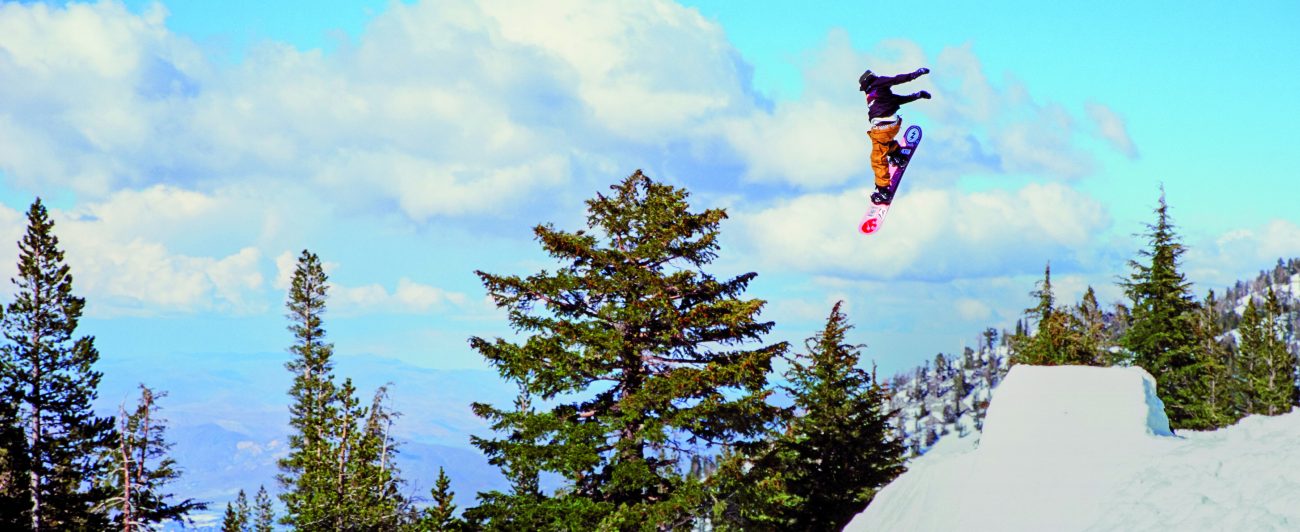Profile
Classic Dreamer
Mike Ravelson Slows His Roll
This feature originally appeared in print in Issue 19.1.
It’s a sunny June morning in Bend, OR and the Ponderosa Skatepark is still pretty much empty when Mike Ravelson arrives. He lays a thin blanket down in the grass next to the mini ramp where he’ll spend a solid 20 minutes chilling, doing a little grapevine sidestep and stretching before setting foot on his board. The 31 year-old deliberately moves at a slow, thoughtful pace and is as laid back as they come. It’s a stark contrast to the self-described “hyper” manner of his younger days.
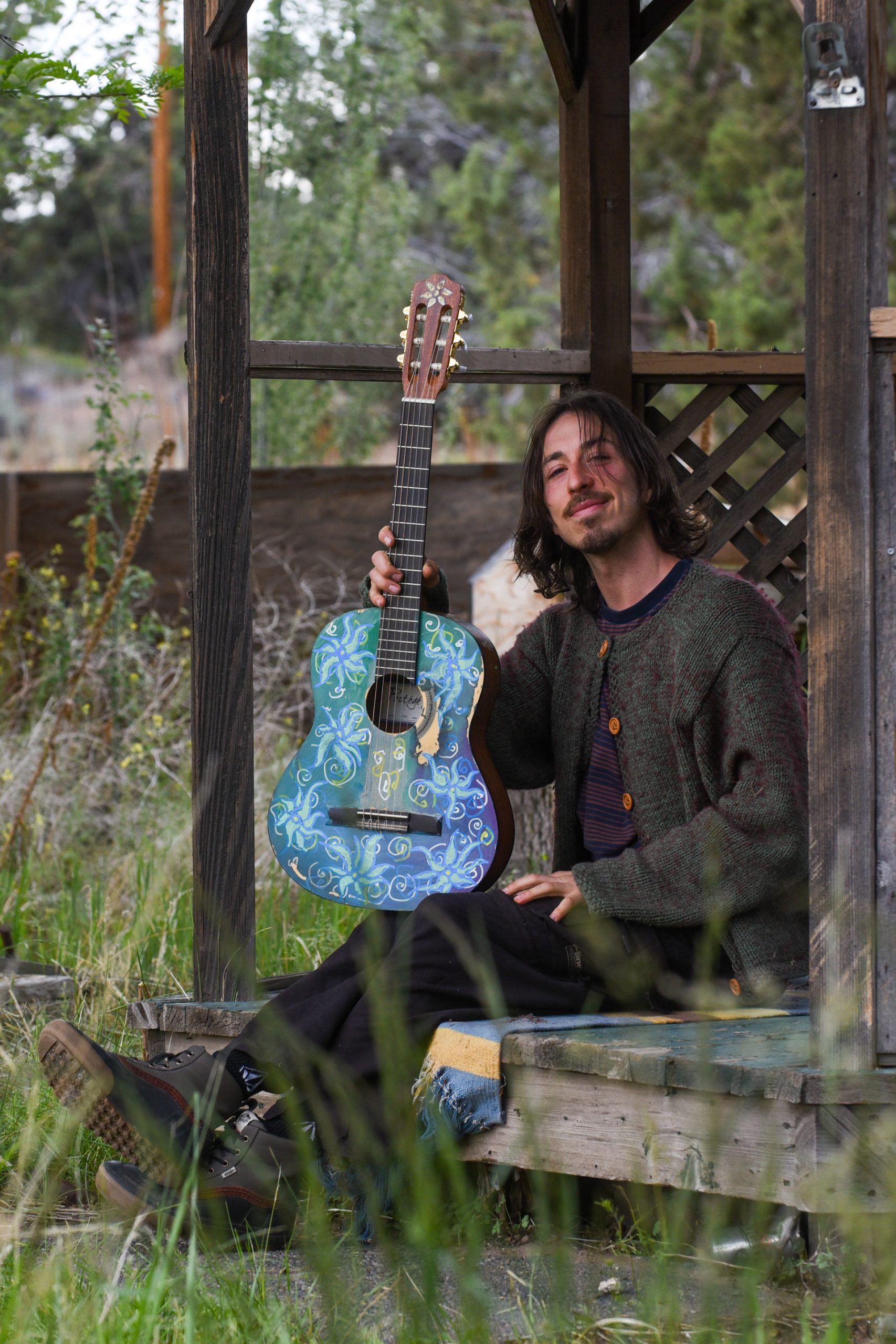
ABOVE “Mike Ravelson lounging outside of Max Warbington’s house following our skate session and interview at the Ponderosa Skatepark Bend, OR in June 2021. Rav is as interesting as he is introspective; creative like a kid yet often self-critical, ever eager to grow, and wise well beyond his 31 trips ’round the sun.” Photo: Ben Shanks Kindlon
From humble beginnings on the East Coast to becoming a globally recognized rider, Mike has carved out a presence in the snowboarding world. He’s an antihero of sorts; a smooth, street-savvy snowboarder known for his eccentric approach to spots where other riders might not see potential. Mike’s ingenuity, beautiful board control and drive have led to numerous video parts and sponsorships with Vans, Volcom and more, and even his own signature snowboard with Capita. This was always Mike’s dream. These accolades, this sense of acceptance and praise were the pieces of the prize puzzle he’d conjured up in his youth. He’d done it. With all the boxes checked, surely Mike had obtained the treasure he needed to feel content. Or so he thought. Mike attributes some of his success to the fast-paced approach of his past, but over the course of his decade-plus career, he’s come to realize that patience often prevails. He’s been trying to slow his roll in every aspect of life, whether it’s selecting snowboard spots, making music, writing poetry, nurturing relationships, or otherwise. He’s actively learning to be more present, humble and patient with himself and what the world has in store for him. “I’ve always been a dreamer,” Mike says. “Just a classic dreamer looking for their treasure. What I’m trying to instill in myself these days is that it’s OK to take things slow and navigate through a dream, to not claw at it. You use so much energy clawing at a dream and it’s usually at the expense of others. The people we love the most we end up hurting the most because they’re the ones closest to us and our total delusions. It’s always at their expense, which comes at your own expense eventually.”
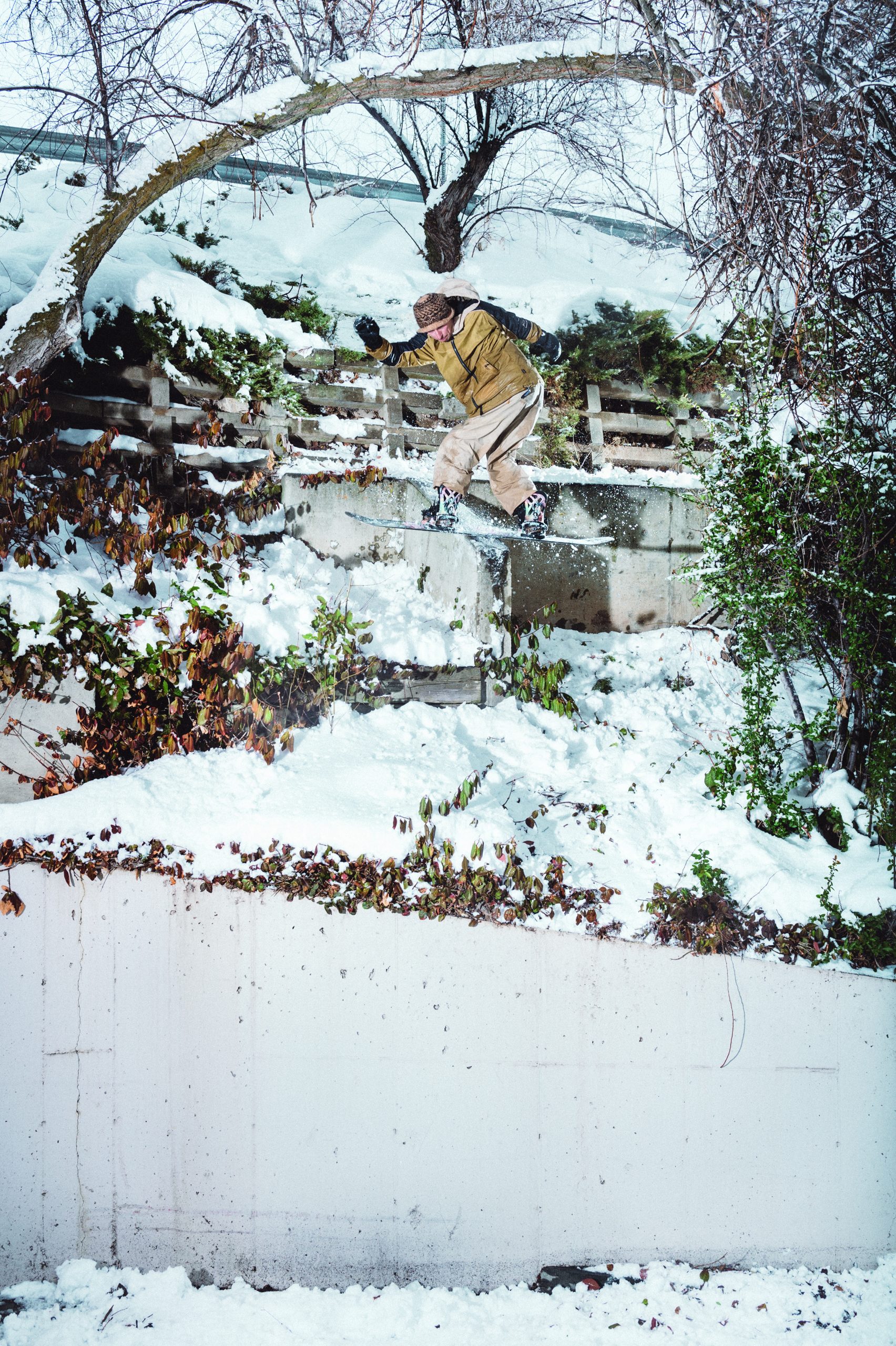
ABOVE Mike has long been revered for his inventive and fun approach to riding street. Drop to front board while filming for Vans’ Evergreen (2020) in Salt Lake City, UT. Photo: Oli Gagnon
MIKE WAS BORN in Worcester, MA, where he lived in a triplex full of extended family. “It was my parents, me and my sister [Julia] on the middle floor, my aunt and uncle on the top and my grandparents in the bottom,” he says. “I have a lotta good memories there, like the first time I ever got sick off cookie dough ice cream. We lived there till I was five or six and then moved over the bridge into Shrewsbury.”
Shrewsbury is just 15 minutes from Worcester, where Mike’s parents, Elizabeth and Bernie, continued to run their family business, Maurice the Pants Man, a popular discount clothing store. Mike’s great-grandfather, Maurice, founded the store and his grandfather, Arnie, ran it after Maurice was in a car accident that left him unable to work. Mike remembers folding jeans at one of the storefronts before the business really took off and his parents sold it. They ended up buying one location back, but about that time cheaper alternatives flooded the discount-clothing market and drove Maurice the Pants Man out of business. Elizabeth returned to school for cosmetology and Bernie started selling insurance, which is what they do today. As they shifted from the old business into new careers, Mike says there was a palpable difference in his parents’ demeanors.
“There were times when everything’s good and there’s parties and everyone’s happy,” he says. “Then, as things start to change, you see how money affects the family and how the frequency of the get-togethers, and the hugs, diminishes a bit, or so I felt. Over time my idea of money started to change, and I wasn’t interested in things like seeing my dad’s new car. I started to see that there was more investment in these shiny new things, which did nothing for the family except maybe even cause more problems because you think that it’s gonna change things. I was 14 or 15 around that time, and that’s when I could tell there was stuff beyond independent problems going on in the house, like, a different attitude being tossed around. But that’s when I was already really into BMX, skateboarding and snowboarding, so I was usually out of the house.”
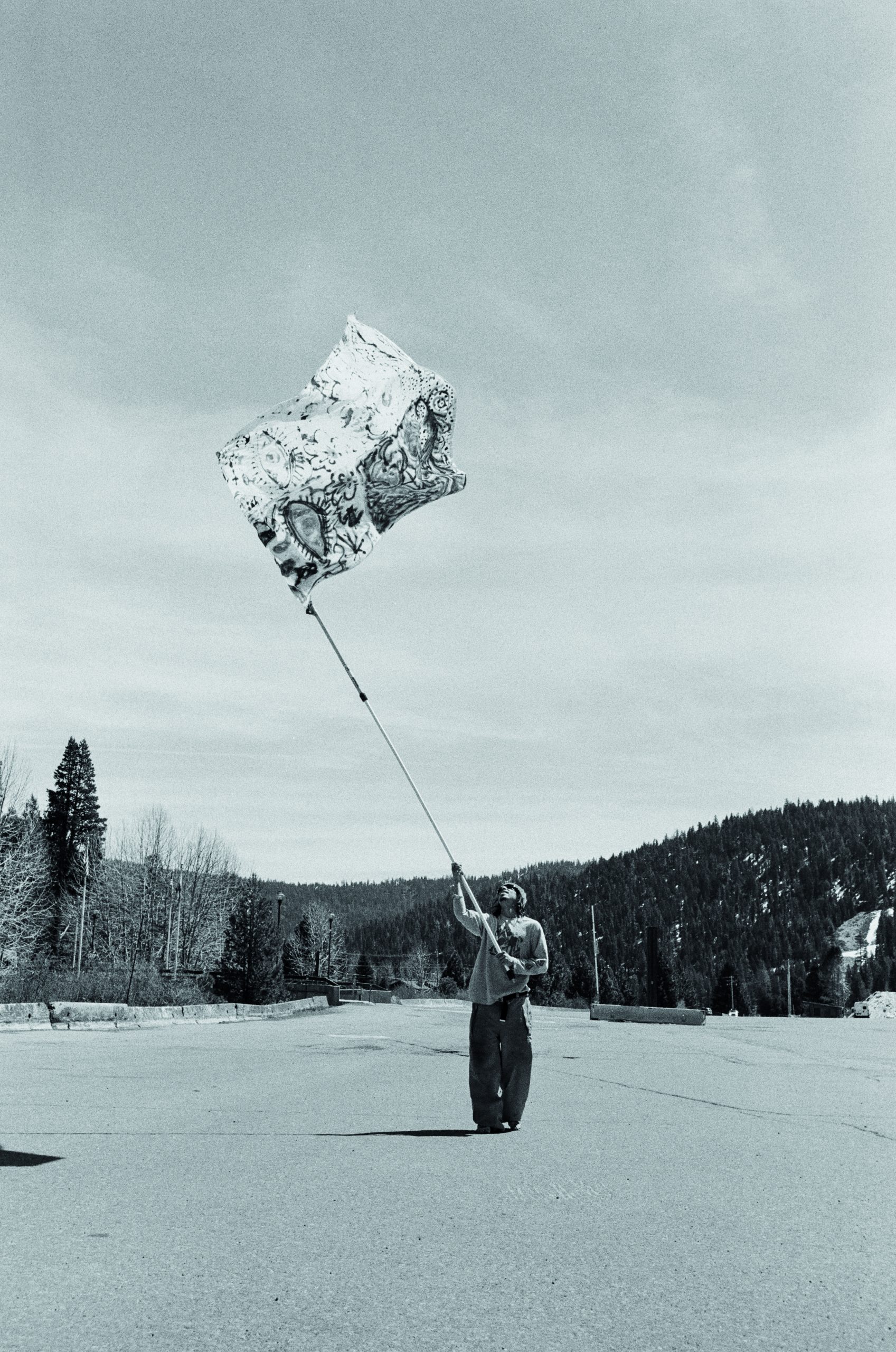
ABOVE “Let your freak flag fly.” — Mike Ravelson, Palisades Tahoe, CA, spring 2021. Photo: Oli Gagnon
Mike’s obsession with snowboarding had begun a few winters prior during a trip to Stowe, VT, with his dad. He’d been skiing for several seasons, but after watching a snowboarder ollie over a bush and ride down into a gully beneath him on the lift, his whole world flipped. Immediately upon Mike’s return to Massachusetts, he counted out $28 from the change bucket in his house and went straight to Home Depot to buy a plastic snowboard. Following some trial and error on his neighbor Mike Steele’s hilly front yard he upgraded to metal edges and began cutting them down the icy trails at nearby Ski Ward. “[The mountain] was like six to 10 minutes from my house in Shrewsbury,” Mike says. “Once I started really boarding, I was there around three times during the school week and Saturday and Sunday. That’s where the whole social scene started for me. You’d see different people from school there, your crushes, people are making out on the chairlift for the first time. It was a really fun time. Then, you know, people are like, ‘That kid can snowboard.’ It can kind of become a part of your identity. It totally became my identity.”
Along with his close friend, Nick Esposito, Mike ripped Ski Ward’s T-bar-serviced halfpipe and park and made the most of every square inch of terrain the hill had to offer. As the duo got older, they began making the 30-minute trek to Wachusett Mountain. Then they started hitting places farther out, such as Loon Mountain, NH, Sunday River, ME, and other resorts, to compete in rail jams, which Mike won with regularity. The pair pushed each other on hill, in the streets when they filmed handrail clips while in their teens, and eventually in the classroom when they attended college together at the University of Plymouth. Although Mike had been a lackluster student in high school, his competitiveness with Nick drove them both to graduate with high honors. “I don’t have a brother, but this is what I imagine it’s like,” he says. “It’s love at the deepest level, but you want to be pushing each other. At the time it’s for yourself, very selfishly, but it works for both of you if you’re both in that mentality.”
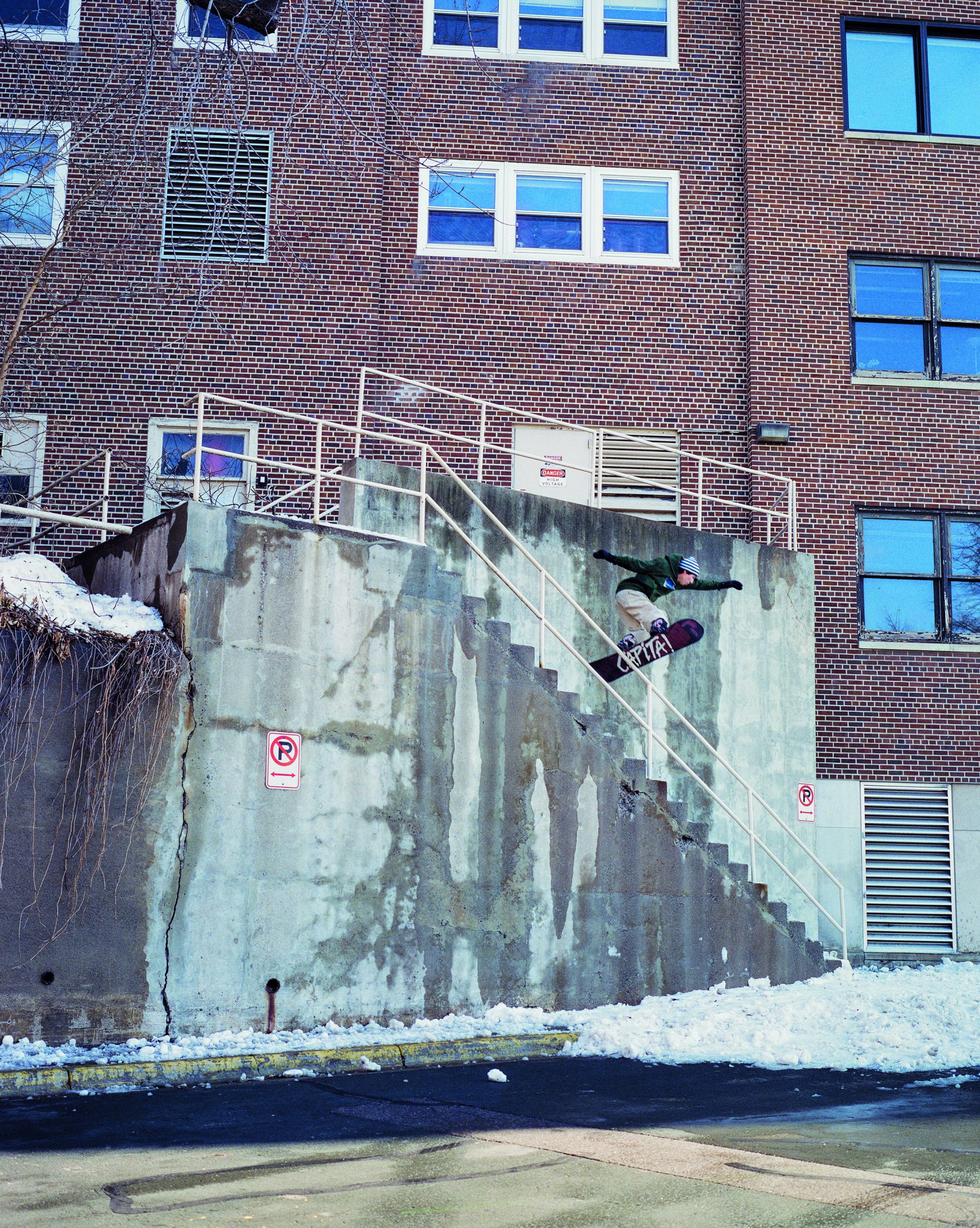
ABOVE It took a little late-night manicuring to get this spot in Minneapolis, MN ready. Mike came back early the following day to ollie up to the pad and lipslide down a previously unapproachable rail. Photo: Oli Gagnon
Outside of school Mike and Nick filmed that got them hooked up with Eastern Boarder, which would soon lead to Mike’s introduction to the folks at Capita. On the snowboarding front everything was going great, but back home things were a bit bumpier. “My parents separated just as I was getting into college,” Mike says. “My house was never really a place of love between them my whole life, so it’s not like I really saw them as together anyway. When they split it was like, ‘Damn, you guys could’ve probably done this sooner and saved yourself a bit of hassle.’ I’m sure that they stayed together for us, which I respect, but at the same time I think a problem that we all have is sometimes not putting ourselves first when we need to. You start putting other people first, when really you can’t help them unless you put yourself first. My parents are the most loving people, they’re really amazing and I’m very fortunate for them. It’s just hard times and sometimes we don’t even realize that we’re in them, and they happen to be at the expense of others. I’m in the same boat, though. I should’ve been more receptive at the time, more open to help.”
In college Mike turned heads with his experimental park riding at Loon thanks to a popular web series called “Loonatics,” as well as videos that showcased his top-shelf board control in the streets. He traveled west to Mt. Hood, OR for his first summer snowboarding experience at High Cascade Snowboard Camp where he met Mark Dangler, who was gearing up to shoot Capita’s acclaimed team film, Defenders of Awesome (2011). Mike earned the opportunity to have a full part in the movie alongside legends such as Scott Stevens and Jess Kimura and rose to the challenge. He put together a memorable part that furthered his standing as a resourceful rail rider and followed it up with standout performances in Keep The Change and Videograss films Holy Smokes (2012) and Roll Call (2013), as well as Defenders of Awesome 2 in 2014. With each successive video part Mike’s style became more and more his own, but it wasn’t until the next chapter of his story that he felt like he honed in on it.
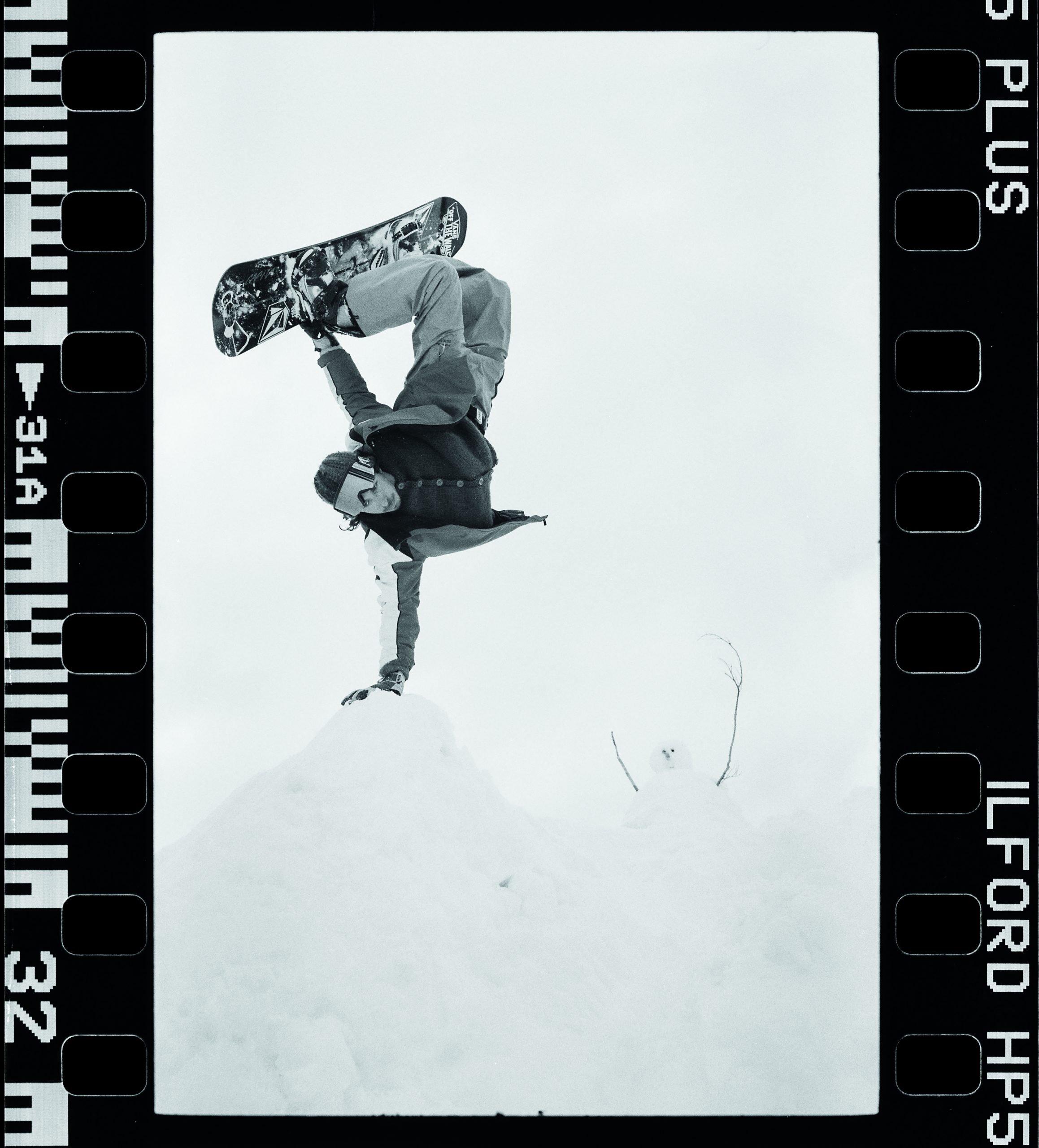
ABOVE Mike makes it a point to do a handplant during every hip session, as seen here last season on the Sunshine Hip at Brighton, UT. “The best spectators are those that are the least judgmental,” Mike says. “We built this snowman while we waited for the light to change and it ended up being a big part of the session. There will definitely be more snow-people to come.” Photo: Oli Gagnon
After spending a few years in New Hampshire following his graduation with a bachelor’s in business, Mike began to feel stagnant. He moved west to Salt Lake City, where he roomed with Christian Buliung and started riding Brighton Resort. Fellow East Coaster Parker Szumowski joined them eventually. Although they had little funds, Mike looks back fondly on that time. “We’d have to pool money together to buy potatoes and live off those for however many days,” he says. “Christian was working at the soup kitchen, so he’d bring back breadsticks and soup. It was honestly one of the best times of my life. It was so pure because we weren’t stressed about having a lot of money. It was a really special time in my career too, where I was able to start developing what I now see as my style. That was when we were just about to film for the Vans video, Landline.” (2018). Mike’s style, which is hallmarked by his ability to find and ride street spots where few else would see potential, shone through in the film. It was refined.
Outside of snowboarding Mike was increasingly getting into in making music, an interest dating back to his days in the Worcester triplex. “My uncle on the top floor, Tony Postale, he’s an incredibly talented guitarist,” Mike says. “He’s still in bands and sends me videos of his bands playing. At family gatherings we’d be jamming, and he’d show me some classic chords. He was very patient with me. But he’d also throw me into some riffs—that’s the way it’s got to be. Just like with everything else, sometimes you’ve got to throw yourself into the mix and just start swimming and see what happens. Then all of a sudden, you’re jammin’. I started traveling around with a guitar when I wasn’t even good because you have to keep plugging away at it. Some people were probably burnt on me playing the same riffs for a couple years straight, but eventually it got better.”
Like any creative outlet Mike dabbles in—painting, poetry, playing guitar—he draws parallels between music and snowboarding. “It’s the exact same thing,” he says. “For snowboarding it’s about getting your feet into certain positions to hit your tricks and for guitar it’s learning how to get your hands to the right place to make the right sounds. Over time, you start being able to bend notes and put your own twist on things, which is like tweaking a grab.” In 2018 Mike teamed up with Brandon Cocard to create EP, a unique short video they shot and scored with music they made themselves over a two-week span in Truckee, CA. They filled out the band with snowboarders including Tim Eddy, Zac Marben and others, and made a similarly themed video, FutureMystique, the following year.
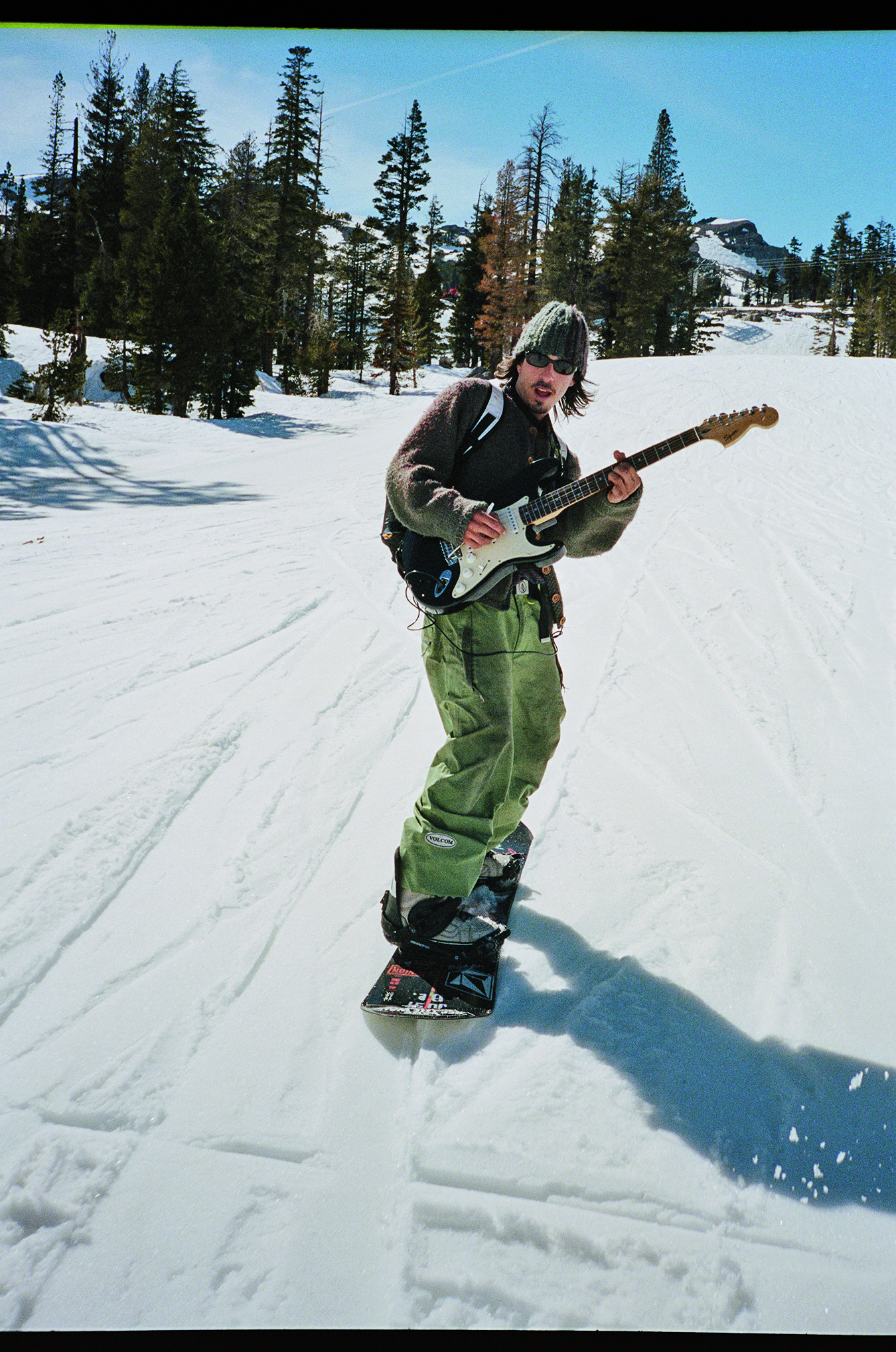
ABOVE You can’t see it, but Mike has a portable amp in his backpack. The traveling musician shreds while shredding at Palisades Tahoe, CA. Photo: Oli Gagnon
Despite all of Mike’s success, he noticed over time that his relationships outside of snowboarding, both with his parents and significant others, were deteriorating. He had developed a habit of convincing himself that poor communication and the subsequent distancing of others were the result of their actions, rarely taking accountability for his own. After years of running from problems, placing blame on others and using snowboarding as his blinders, Mike decided to slow the machine, kill his ego, and look inward. “Lying is easy, and lying to yourself is even easier,” Mike says. “Once I started snowboarding, there hasn’t been a day that I haven’t thought about it. It totally possesses you—in a good way, but later on you learn it can also be in a bad way. Anything that takes over control of your life and makes it so you can’t realize the things going on around you is not so great in some ways. It played into me being totally vacant as time went on. Snowboarding was a way for me use landing a trick to make myself think that everything must be good. You justify everything by building on your dream, clawing at it however you can. But unfortunately, a lot of it was at the expense of my ignorance toward others.
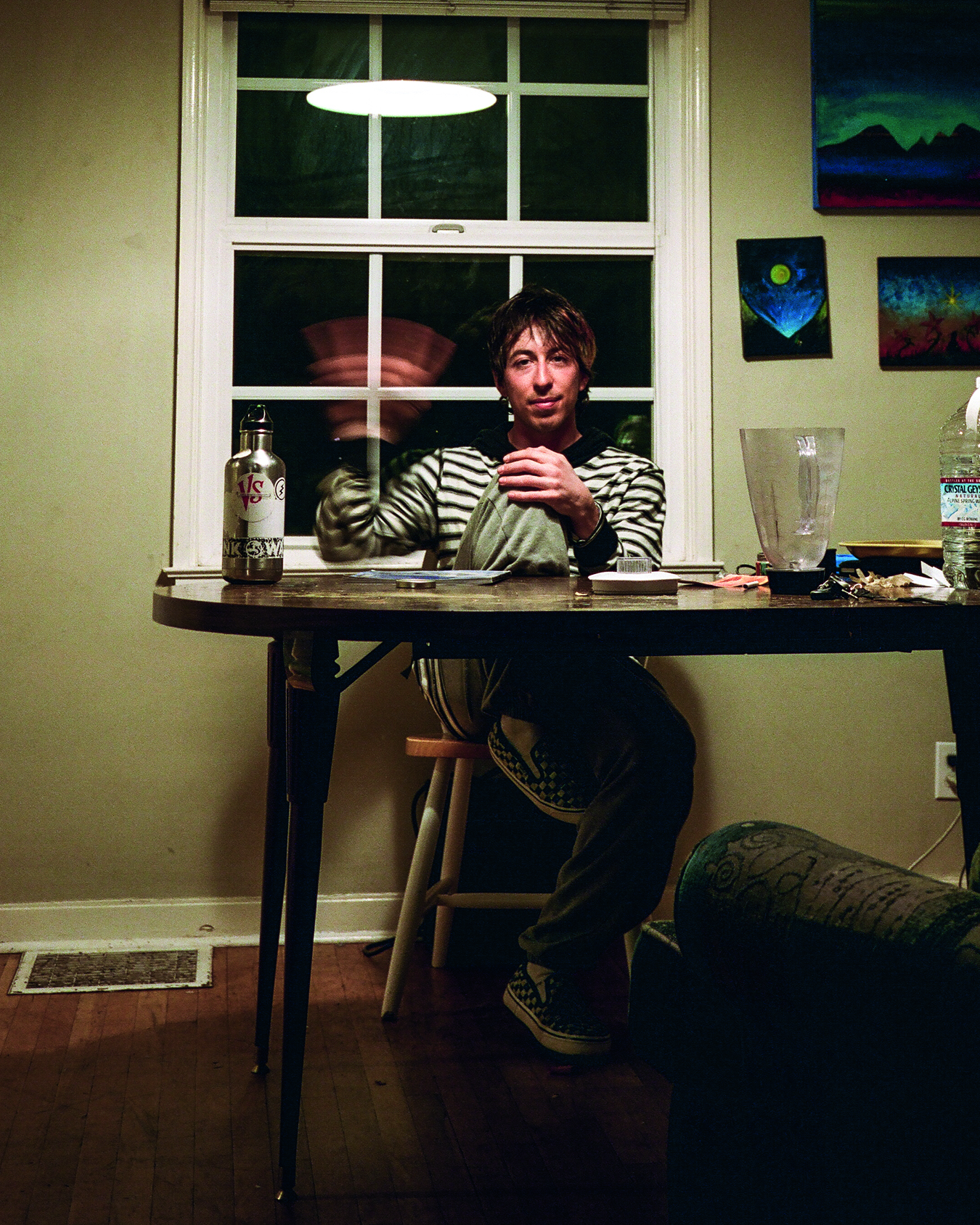
ABOVE Rav at home in Salt Lake City, most likely after cooking up something really good.” Photo: Ian Boll
“I had to make a million mistakes, but then I started tuning in to the little things that people would tell me, whether it was a girlfriend, friends, or my parents. At the time they don’t make sense, but now I look back and think about some of these little jabs that people have taken at me, and they really helped me. I realized I was being selfish for a long time and just kind of self-centered. I had to take the time to reassess myself because after some time, you have to stop lying to yourself. You can’t keep going into denial and pushing it away by going into new scenes or whatever. You can spend so much time wrapped up in like your dream, like, ‘I wanna be this’ and ‘I wanna do that,’ that you kind of lose track of who you are, then you gotta refind it. Being a snowboarder has gotten me through hard times, but that alone isn’t going to get you through everything forever.”
Mike realized that happiness comes from within. That it’s not something to be obtained through possessions and achievements, but can be found in humility and relationships. These days Mike has a good rapport with his parents. He’s grateful for all the privileges they’ve afforded him over the years and for their patience through the growing pains. Recently, he spent some time with them in upstate New York, where he was visiting his good friend, Johnny O’Connor, in Wyndham. Johnny broke his arm while filming for a project he, Mike, Austin Visintainer and Kaleah Opal started working on last winter, so Mike took the train east to lend a helping hand at the O’Connor’s pub and inn. Mike speaks very highly of the area due to its slower and more relaxed pace. He says it’s highly possible he’ll settle down there one day. Following his trip to New York, Mike traveled to Bend where he’s been staying with his girlfriend, Naima Antolin, as she heals from overdue shoulder surgery. Mike still pays rent in Salt Lake City although it’s been a while since he’s been there. It’ll probably be a while longer before he returns. For now, he’s just jammin’.
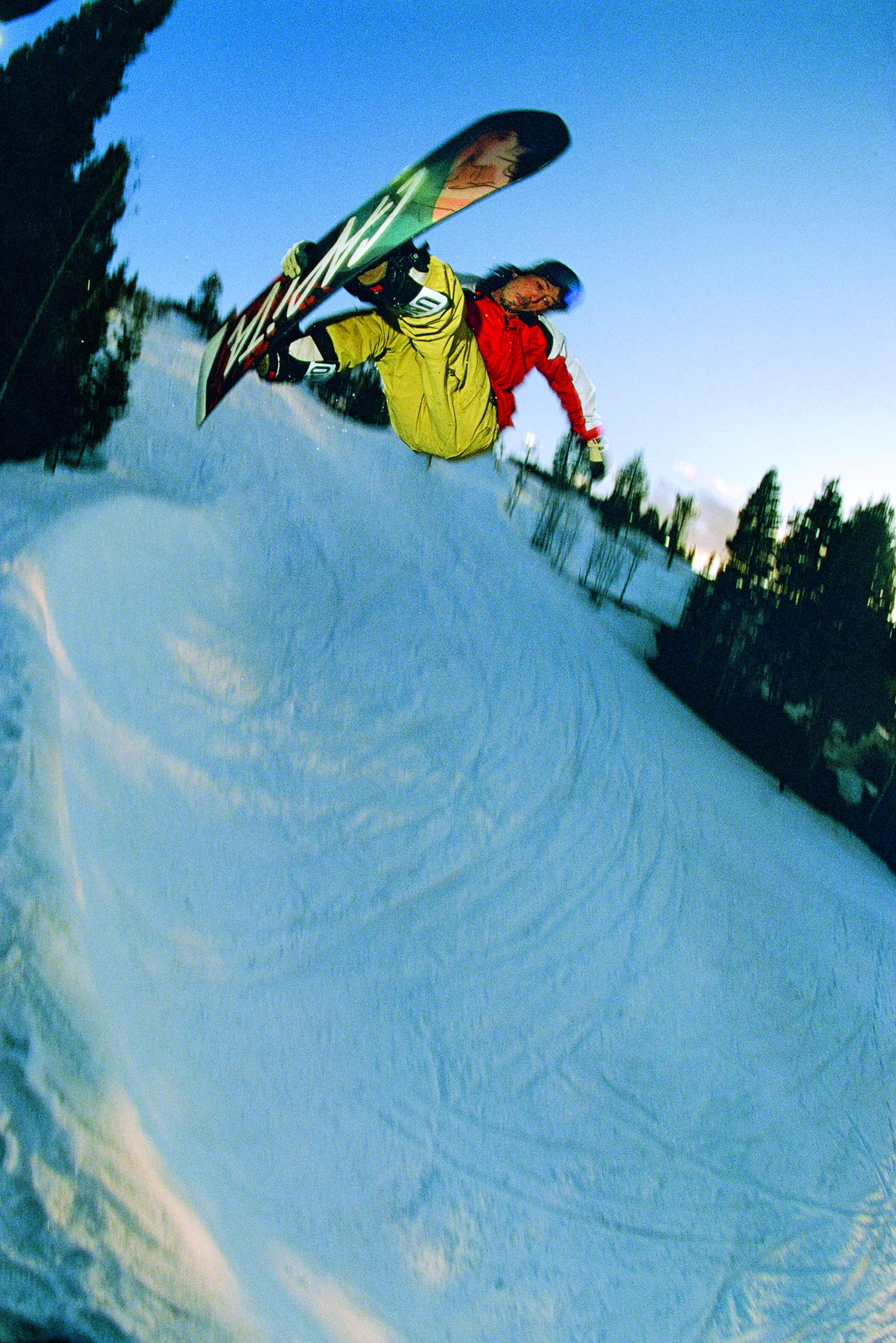
ABOVE Oli Gagnon shot this frontside air atop a ladder on the deck of a quarterpipe at Woodward Park City, UT. “It was one of my favorite sessions of the year,” Mike says. “We had a big crew hiking, hooting and hollering. It’s like we’re all jamming together and each time someone drops they’re adding notes to the song. It’s a very collective experience, but you also might walk away with something sick individually, like this photo.” Photo: Oli Gagnon
By the time Mike finishes stretching, a few more heads have rolled into the Ponderosa Skatepark. After numerous runs on the mini-ramp followed by a bite to eat, it’s back to the house. As evening falls, Mike grabs his blanket and guitar and heads to a nearby pond for a sunset jam session. After he arrives he takes his time, gets comfortable. He consistently practices what he preaches about being present and patient. He says these learned behaviors have enhanced his boarding, music, poetry and art, and they have clearly improved his perspective.“When I was clawing at my dreams, I was making some progress,” Mike says, “But I was digging myself holes as well. I know now that these things come in perfect time. All the things that we want to be have to be when they willingly flow into existence, not when they’re pried. When I gave up on clawing at the dream, I was able to flow through that dream even further than I could have even imagined, and I’m still floating now.”
